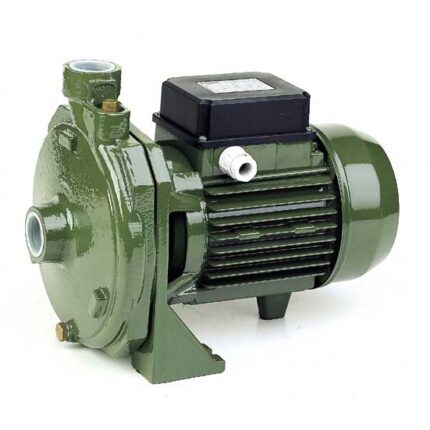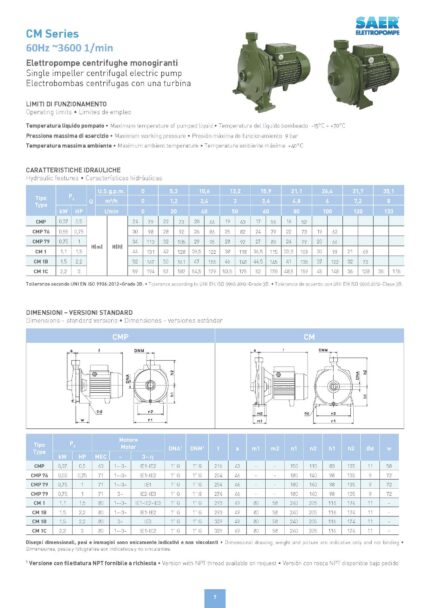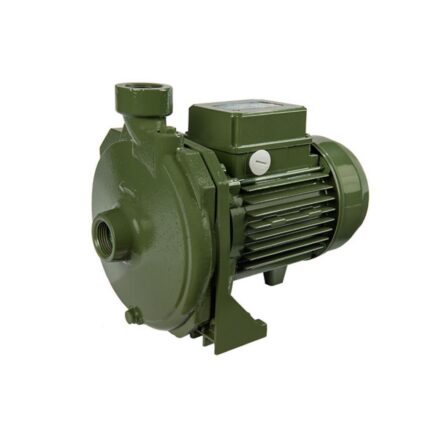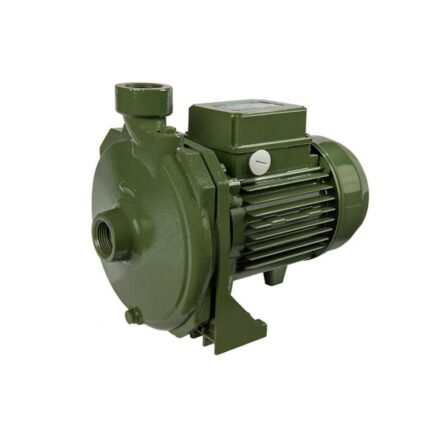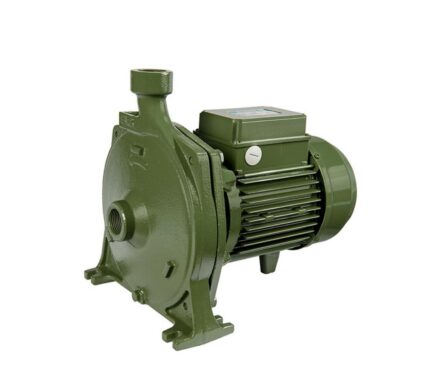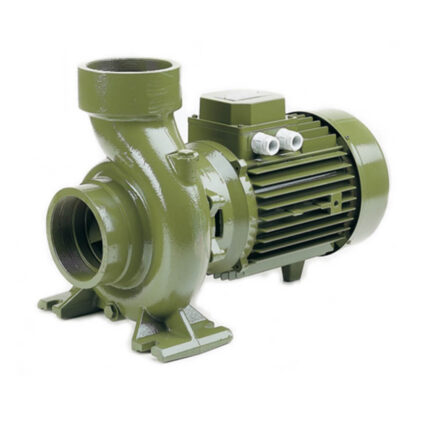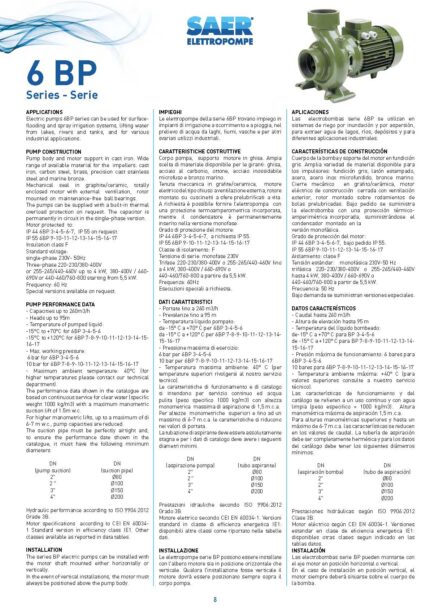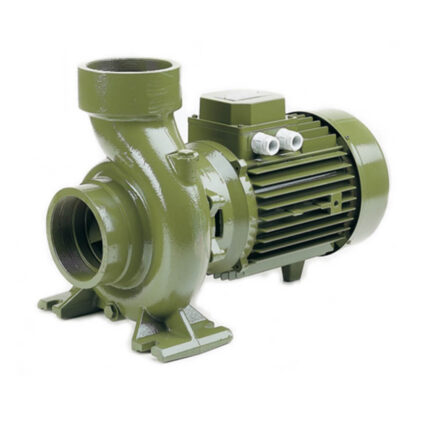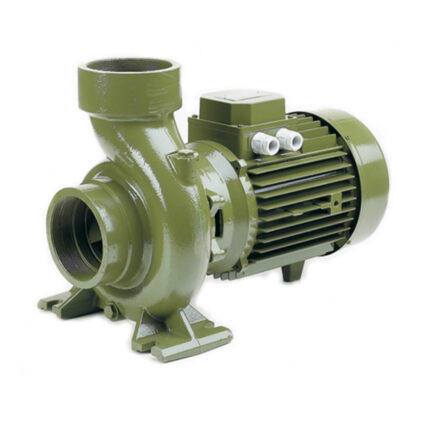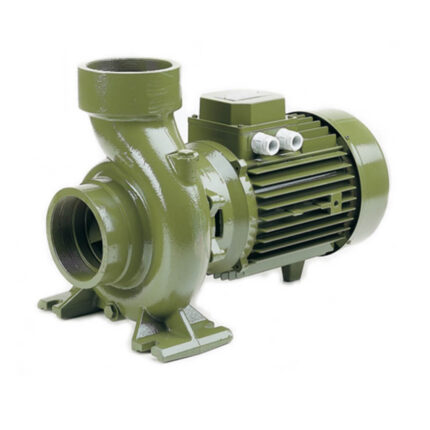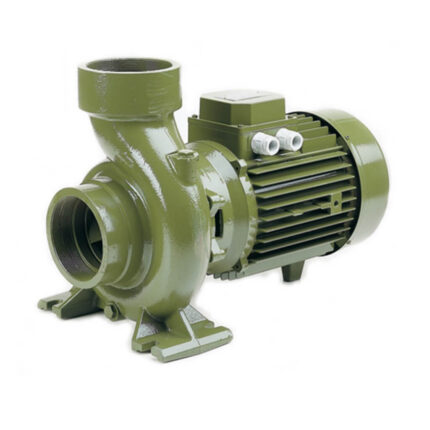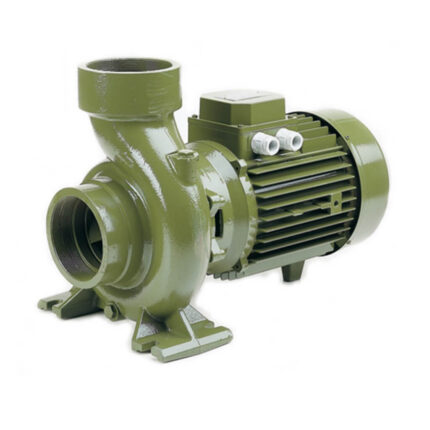Centrifugal Pumps
Centrifugal pumps are used to induce or raise water flow from a low level to a high level. These pumps work on a very simple mechanism. A centrifugal pump converts rotational energy, often from a motor, to energy in moving water.
How Does a Centrifugal Pump Work? An Expert’s Illustrated Guide
Hi, I’m Bijan, founder of Spring Pump. With decades of hands-on experience in the pump industry, I’ve seen it all. I’ve seen perfectly good pumps fail from a simple misunderstanding of their mechanics, and I’ve helped countless clients find the perfect pump by breaking down how they work.
Today, I want to pull back the curtain and demystify the workhorse of the fluid-handling world: the centrifugal pump. This isn’t just a textbook explanation. This is a practical guide, born from years in the field, to help you understand how a centrifugal pump works, what goes on inside, and how to choose the right one for your needs.
The Basic Principle of a Centrifugal Pump: A Simple Spin
So, what is the basic principle of a centrifugal pump? It’s surprisingly intuitive.
Imagine spinning a bucket of water around in a circle. You’ll feel a force pushing the water against the sides of the bucket. That outward-pushing force is centrifugal force, and it’s the magic behind the entire operation.
A centrifugal pump uses this principle to move fluid. It takes rotational energy from a motor and converts it into kinetic energy (the energy of motion) in a fluid. Then, it cleverly converts that kinetic energy into potential energy in the form of pressure. This entire process is a beautiful demonstration of fluid dynamics and is governed by Bernoulli’s Principle, which states that as a fluid’s speed decreases, its pressure increases.
what Happens Inside a Centrifugal Pump? A Step-by-Step Journey
Let’s follow a drop of water as it travels through the pump:
- Enters the Eye: The fluid is drawn into the pump through the suction port and flows directly into the center, or “eye,” of a rapidly spinning component called an impeller.
- Gains Speed: As the impeller spins, its curved vanes catch the fluid and sling it outwards at high velocity, driven by centrifugal force. The fluid now has high kinetic energy.
- Slows Down and Builds Pressure: This high-velocity fluid exits the impeller and enters the volute casing. The volute is a specially designed spiral-shaped chamber that gradually widens. This expanding area forces the fluid to slow down. According to Bernoulli’s Principle, as the fluid’s velocity drops, its kinetic energy is converted into high pressure.
- Exits Under Pressure: Now under high pressure, the fluid is pushed out of the pump through the discharge port, ready to do its job in the system.
[Image suggestion: A clear, labeled diagram showing the fluid’s path from the suction port, through the impeller eye, along the impeller vanes, into the volute, and out the discharge port.]
The 4 Main Parts of a Centrifugal Pump: An Anatomy Lesson
While there are many components, four are absolutely critical to its function. I call them the heart, the body, the spine, and the guardian.
- The Impeller (The Heart): This is the rotating component with vanes that imparts velocity to the fluid. The function of the impeller is to be the primary mover, converting the motor’s rotational energy into the fluid’s kinetic energy. Its design is the single most important factor determining a pump’s performance.
- The Casing (The Body): This is the shell that contains the fluid and directs its flow. In most designs, this is a volute casing. Some high-performance pumps may also use a diffuser—a set of stationary vanes that surround the impeller to help convert velocity to pressure more efficiently.
- The Pump Shaft (The Spine): This is the central component that connects the impeller to the motor, transmitting the rotational energy. A robust and perfectly aligned shaft is crucial for a smooth, vibration-free operation and long service life.
- The Sealing Mechanism (The Guardian): Where the shaft exits the casing, a seal is needed to prevent leaks. This is typically a set of packing rings or a more modern mechanical seal. In my experience, a failed seal is one of the most common reasons for a service call.
Types of Centrifugal Pumps: It’s All About the Impeller
The structural characteristics of a pump are largely defined by its impeller design. Choosing the right one is critical for efficiency and longevity.
- Pumps with Closed Impellers: These have vanes enclosed between two shrouds (plates). They are highly efficient but are only suitable for clean liquids with no suspended solids, like in water booster systems.
- Pumps with Channel Impellers: Designed with wide passages, these are the go-to choice for wastewater and sewage applications, as they can pass large solids and fibrous materials without clogging.
- Pumps with Vortex Impellers: This is my favorite for tough, abrasive jobs. The impeller is recessed in the casing, creating a vortex (a whirlpool) that moves the fluid and solids. Since most solids don’t directly impact the impeller, wear and tear are drastically reduced. It’s perfect for sludge and slurries.
- Pumps with Spiral Vane Impellers: This is a more specialized design used for delicate fluids or those with high viscosity or entrained gas.
Quick Comparison: Choosing the Right Impeller
Advantages and Disadvantages: An Honest Look
From my years in the field, here’s the straightforward truth about centrifugal pumps:
Advantages:
- Simple & Reliable: Fewer moving parts mean less wear and easier maintenance.
- Cost-Effective: Their simple design makes them relatively inexpensive to purchase and operate.
- Smooth Flow: They provide a steady, non-pulsating flow.
- Versatile: Can handle a huge range of flow rates and pressures.
Disadvantages:
- Not Self-Priming: Most need to be filled with liquid (primed) before they can operate.
- Poor with High Viscosity: They struggle with thick liquids like honey or heavy oils.
- Susceptible to Cavitation: Running with insufficient suction pressure can create damaging vapor bubbles. A common mistake I see is improper suction line design, which leads to cavitation and destroys the impeller.
Maintenance and Safety Precautions
A well-maintained pump is a reliable pump.
- Maintenance: Regularly check for leaks, listen for unusual noises or vibrations, and ensure proper bearing lubrication. A small issue caught early can save you a fortune.
- Safety: Always follow lock-out/tag-out procedures before performing any maintenance. Never operate a pump against a closed discharge valve for extended periods (this can cause rapid overheating). Ensure all rotating parts are properly guarded.
Frequently Asked Questions (FAQ)
Q1: What is the basic principle of a centrifugal pump? A: It uses centrifugal force to move fluid. A rotating impeller flings fluid outwards at high speed (kinetic energy), and a surrounding casing (the volute) slows the fluid down, converting that speed into high pressure.
Q2: What are the 4 main parts of a centrifugal pump? A: The four core parts are the Impeller (adds energy), the Casing (converts energy to pressure), the Shaft (transmits power), and the Sealing Mechanism (prevents leaks).
Q3: What is the primary function of the impeller? A: The impeller’s function is to transfer rotational energy from the motor to the fluid, accelerating it to a high velocity before it enters the pump casing.
Q4: What is pump cavitation and why is it bad? A: Cavitation is the formation and collapse of vapor bubbles inside a pump due to low suction pressure. The collapse of these bubbles is violent, creating shockwaves that can chip away at the impeller and casing, causing significant damage and noise.
Q5: Can a centrifugal pump run dry? A: No. Running a centrifugal pump dry is one of the fastest ways to destroy it. The fluid is needed for cooling and lubrication, especially for the mechanical seal, which can overheat and fail within minutes without it.
I hope this guide has given you a clearer picture of the incredible engineering inside every centrifugal pump. They are the unsung heroes of our modern world, and understanding them is the first step to harnessing their power effectively.
If you have a challenging application or just need expert advice, don’t hesitate to reach out to the team at Spring Pump. We don’t just sell pumps; we provide lasting solutions.

